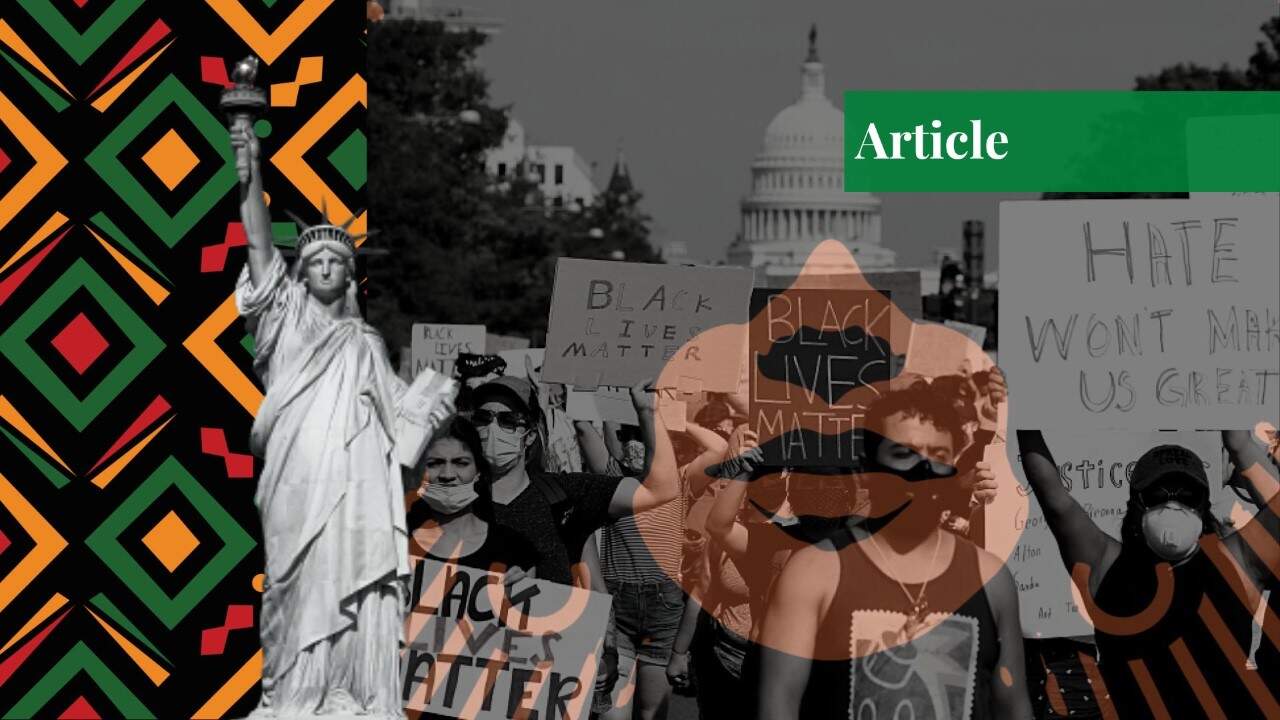Hafsa Ammar is a graduate of the National Defence University, Islamabad. Her areas of expertise are narrative building and propaganda warfare, centered around the Soviet Union and modern-day Russia.
Introduction
In 1619, the first slave ships were brought to port in Virginia, and by the time the Declaration of Independence was signed in 1776, several of the founding fathers were proud owners of African American slaves. In 1857, the first rebuttal to such blatant cruelty came from the Dred Scott v. Stanford case.
In Dred Scott v. Stanford, a former slave fought for the right to exist without the brand of slavery; he lost the case, but it tipped the dominoes for the Emancipation Proclamation of 1863, paving the way for the 13th, 14th, and 15th Amendments which declared the right to freedom from slavery, citizenship rights, and voting rights respectively for all former slaves.
The next wave of protests for black freedom came in refutation of the Jim Crow laws, leading to bus boycotts, sit-ins, and the legendary Martin Luther King Jr.’s civil rights movement. The struggle for rights is nothing new to the black community. The Black Lives Matter (BLM) Organization was formed in 2013 in reaction to the death of Trayvon Martin. However, the protests and marches brought recognition to it in 2020 after the death of another black man going by the name George Floyd.
Race and Ethnicity
The instrumentalist theory of ethnicity states that an individual can have multiple ‘hats’ or identities that they can switch around in accordance with the context. A person can distinguish themselves by whatever part of their identity is being questioned, called into light, or is the most advantageous in a certain setting.
Ethnicity is a means to an end. The selection of which metaphorical hat of existence the person wants to wear depends on the socio-political goal they want to achieve.
The Social Identity Theory
Proposed by Tajfel and Turner in 1987, the social identity theory states that people perceive themselves to be part of specific categories or groups in a society. Their sense of belonging stems from this group allocation and so do their behavioral attitudes. Members of a group tend to act in tandem, empathize with one another, and tend to view their own group with more positive attributes (positive distinctiveness) than with which they view others.
The formation of social identity is based on a few factors such as social status, economic standing, cultural acceptance, and a general level of recognition and respect. An individual’s sense of self is tied to their in-group and their social identity. This division of ‘Us vs Them’ is done solely by the recognition of ‘Us’.
The in-group is what the individual identifies themselves with; anyone who is not in the in-group is the out-group or ‘other’. Familiarity with the in-group leads to social cohesion and mutual support, and there is a common share of both joy and grief. A social identity group can be based on any aspect of a person’s identity—gender, age, culture, ethnic background, education, employment, etc.
To apply this particular theory in the Black Lives Matter movement, the black community would be the in-group and the non-black or the ‘Whites’ would be the out-group. The in-group formation is based on the racial identity of the members. The black community has suffered at the hands of privileged white Europeans for centuries. Hence, the joint struggle has led to the nurturing of emotional affiliations between members of the community.
During the ‘Take the Knee’ movement, individuals from all walks of life—actors, activists, and basketball players alike went down on one knee to show solidarity against the blatant racism prevalent in all avenues of American life. All that they had in common was the color of their skin, but as they identified with the same in-group, it was enough to send ripples of protests across the state.
The black identity has been molded mostly by discriminatory acts that have herded the people into one pen. They have been called out as second-class citizens; their appearances are mocked and imitated for the purpose of humiliation; and they are prejudiced against in terms of employment, education, and wages.
Through this theory, we understand that the collective stripping down of the entire African American ethnicity socially, culturally, politically, and economically led to the monumental Black Lives Matter movement. The ‘black’ social identity is further strengthened and elaborated on by the strain theory.
The Strain Theory
Introduced by Robert Merton, the strain theory explains the build-up of frustrations and consequential reactions. The theory maintains that a group acts in certain ‘deviant’ ways due to the strains put upon them by society. Deprivation can cause an increase in crime rates and delinquency, but relative deprivation does all that and more; it solidifies the sentiments of one group against the other due to the resulting dynamics from the unequal power distribution.
Merton deduced that classes closer to the poverty line feel the strain of societal pressures more so than others and are reduced to petty crimes to make up for what they’re denied by the upper class. As the food chain in America is being dominated by white capitalists, the people of color are situated below them. Members of the African American community are on the lowest rung of the ladder. The theory corroborates the Black Lives Matter movement as a clear conclusion of all frustrations amassing into one social revolution.
If you want to submit your articles and/or research papers, please check the Submissions page.
The views and opinions expressed in this article/paper are the author’s own and do not necessarily reflect the editorial position of Paradigm Shift.


















